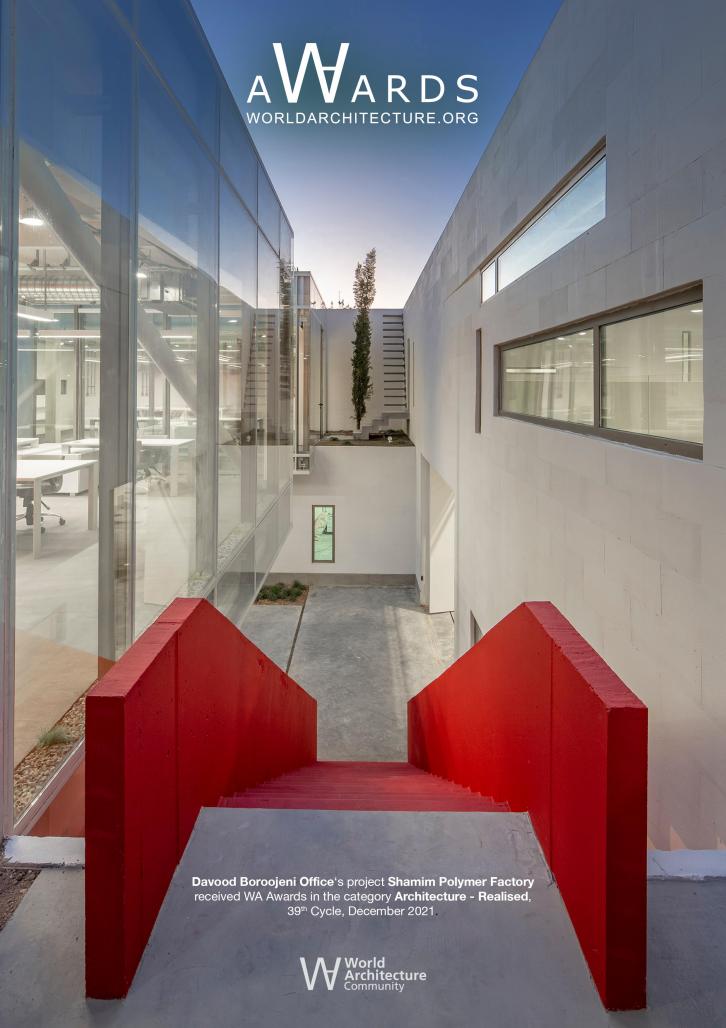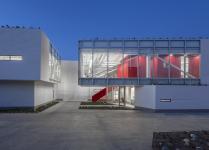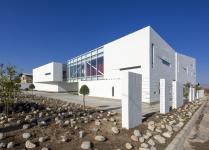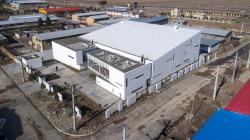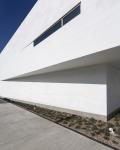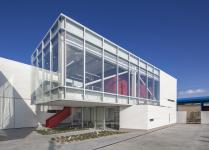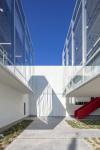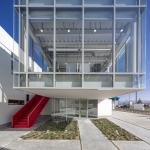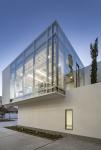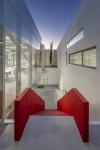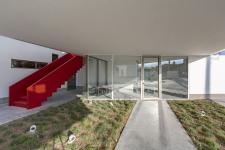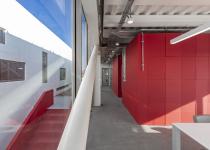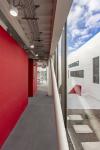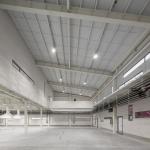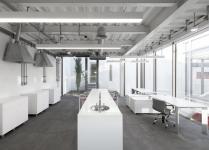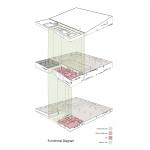The project proposal is related to a factory for the production of polymeric materials. The factory has a production, office, and research department. The project land is approximately square-like (60 meters long and 50 meters wide) is limited to the neighbor in the north and west and to the street in the south and east. This land with an area of three thousand square meters is located in a small industrial town in Alborz province of Iran.
The lack of architectural separation for different work activities in Iranian factories is the major reason for the low quality of living spaces for such functions. As a factory has multiple workspaces and houses a range of staff from laborer to lab specialists, the architectural quality of connecting spaces which also plays the role of separating different activity areas is of crucial importance. However, the majority of industrial buildings in Iran have integrated structures and the only dividing area for different functions are interior walls.
This project seeks to solve this problem by increasing the sense of connecting spaces to improve the quality of life of factory workers.
The concept of this complex took place in two outdoor void spaces perpendicular to each other. One void stretches south to north and the other empty space stretches east to west.
The geometry of these void spaces makes the separation of different parts possible and acts as a middle courtyard for connecting different areas with each other.
Human dimensions, open-air, light and shadow, green space, and color increase the sense of the middle courtyard. Different sections with glass walls or windows overlook the middle courtyard and improve its psychological security.
In choosing construction materials, their purity has been considered. Floors are made of concrete and steel, walls are made of prefabricated concrete blocks, glass, and prefabricated concrete panels, and stairs are made of cast-in-place concrete without any other materials.
2018
2020
Things such as the desired spatial quality, local architecture, climate, and exposed usage of materials have been considered in the Shamim Polymer factory’s design. We believe that the beautiful, innovative, and useful architecture of the Shamim Polymer factory is the result of using the above-mentioned simultaneously.
The most important challenge in designing industrial uses, given the wide range of their employees from simple workers to laboratory specialists, is the proper separation of different workspaces and implementing hierarchical access. Our studies have shown that the lack of proper placement in different uses relative to each other has significantly reduced the efficiency of production, and requires more energy and manpower to compensate for it. For this purpose, instead of a wall, we used space to separate different parts. The middle courtyard’s prediction helped to separate various parts of the factory properly, including the administrative, the laboratory, and the production areas. Another challenge was the possibility of leaving this middle courtyard abandoned. To meet this challenge, we increased the spatial quality of the middle courtyard by observing human dimensions, considering open air for it, predicting the light and shadow play, green space, and color.
In Iran, there have been specific patterns for organizing building plans from the past. The middle courtyard and the perpendicular axes are two important patterns in Iranian architecture. These two patterns are still used today in the design of buildings with residential, administrative, multi-purpose, parks, etc., but their traces have disappeared in today's industrial architecture of Iran. There are documents indicating that these two patterns were used about 400 years ago and in the historical era of Safavid in the industrial uses’ design. The factories of that era, called BIOTAT, had two axes perpendicular to each other and had a courtyard in the middle. It is believed that the prediction of these two patterns in the architectural design of Shamim Polymer factory is an attempt to revitalize these two Iranian architectural methods in industrial uses.
The context of design has consisted of cold winters with strong western winds and hot summers. Reducing energy consumption through architectural solutions has been the main concern during the design of the factory. For this purpose, we have used materials with a low heat transfer coefficient for the walls. The chosen color for the outer shells was white with the aim of minimizing the absorption of solar radiation in summer. Spaces such as warehouses are located on the western wall and act as heat filters in summer and winter. Our other solution for this purpose is the green roof of the administrative part of the factory. In December, we checked the outside air temperature and the administrative area daily. The lowest temperature of the outside area for this month is minus 8 degrees, while the lowest temperature of the inside area without the use of heating devices has been recorded at 18 degrees Celsius.
One of our primary goals of design was to expose materials. We believe that the use of exposed materials not only creates an industrial feel in the spaces, also makes less harm to the environment. Structures are made of steel, floors are made of concrete, walls are made of prefabricated concrete blocks, glass, prefabricated concrete panels, and stairs are made of in-site concrete without any other materials being added.
Principal Architect: Davood Boroojeni
Design Team: Saba Ammari, Hamed Kalateh
Photographer: Parham Taghioff
Presentation: Saman Macvand
Civil Engineer: Bardia Khafaf
Mechanical Engineer: Hamidreza Nikzad, Mohsen Jafari
Electrical Engineer: Amir Salamat
Executive Team: Barbod Mokhtari , Emran Nazarian
Shamim Polymer Factory by Davood Boroojeni in Iran won the WA Award Cycle 39. Please find below the WA Award poster for this project.
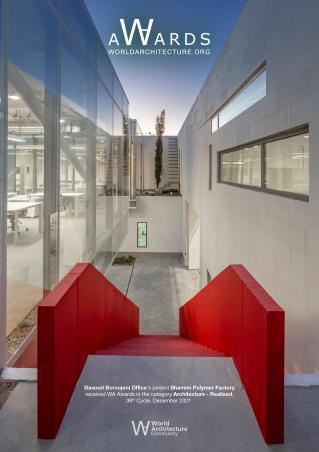
Downloaded 0 times.
Favorited 8 times

